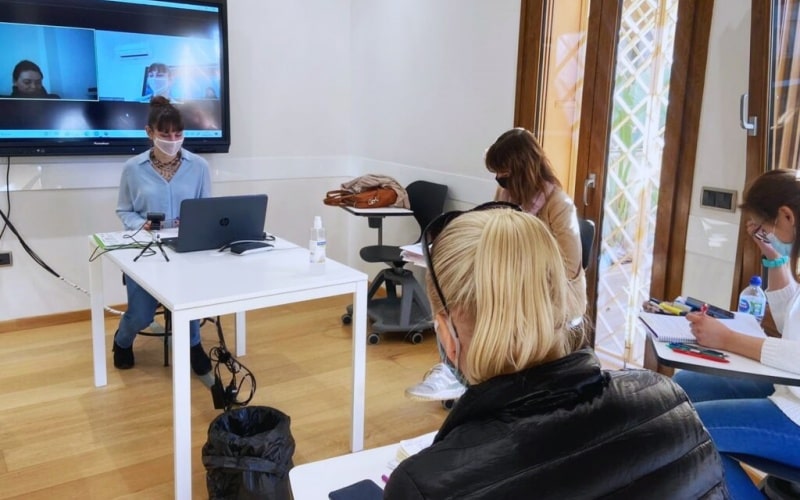Despite the adversities of the current world situation, Hispania, escuela de español has chosen to innovate in the modality of its Spanish classes. After the good reception of the classes of Spanish online in the Hispania Community and the advantages of face-to-face classes in Valencia, Hispania, escuela de español It also offers its Spanish classes in a hybrid format. We then interview Rita Rodríguez, ELE teacher at Hispania, escuela de español and in charge, together with Ana Corn, of the internal training of the hybrid classes to better understand the advantages of this modality.
So that we can all get an idea of the benefits of hybrid classes, Rita, can you tell us what teachers and students can benefit from?ianAre you learning Spanish?
I think it is the future. Technological advances offer us unique opportunities and one of them is the possibility of breaking any barrier or obstacle. With hybrid classes you are entering the classroom and at the same time you are entering the world because you bring together people from different parts of the planet in a single space. One of the most enriching things about ELE world It is being able to get closer to different cultures and ways of seeing life and the hybrid classes make it even more possible.
I study themianThey enjoy them a lot because, on the one hand, those who are still in their countries are already beginning to feel in Spain, they are being taught by highly trained native teachers, they are talking to other students.ianwho are already living here and who can tell you about their experience, give you advice, help ... and study them.ianThose who are in Spain, like the teacher, have the possibility of traveling without leaving their chair.
Pronounce phrases like "it's very hot here and what's up there?" or "here is 9 o'clock, we just woke up, what about there?" it is something that is priceless.
Undoubtedly, the benefits for ELE classes are many, but we understand that this modality is also a challenge for ELE teachers, don't you think?
Definitely. The biggest challenge is changing your mindset about what a Spanish class consists of or what it is like. We teach a language and that requires practice and active participation in the class. What's more, we follow the Método Hispania which is based on the special dedication to each student. Here each student is important and we make sure they feel like one. For this reason, the teacher, previously used to treating students face to face or online, has to manage to combine these two forms of teaching in one and continue to make all students feel comfortable and take advantage of their Spanish classes to 100 %. It is a challenge that we have to accept because it makes us get the best of ourselves and become better ELE teachers.
Tell us a little more about your personal experience with this format. How did you feel after teaching your first hybrid class?
I think the exact word would be excited. One of the things I like most about my profession is that it allows me to meet studentsianwonderful teas from different parts of the world. This beautiful thing is also very sad because, sooner or later, they return to their countries and the goodbyes are very harsh. So when I got to class, I connected the equipment and I was reunited with a former student from Germany, I was very excited.
Do you think i study themianAre you adapting well to hybrid Spanish classes?
Yes, the feedback What do the studies give us?iantes is usually very positive because at a time like this of continuous changes, it is a very good way to adapt to any circumstance and continue learning Spanish.
That's great! So, do you think that the hybrid modality is something temporary or that it has come to stay? How do you think this modality can influence the language tourism sector and, specifically, in the teaching of Spanish?
I believe that the hybrid modality has come to stay because we are in an increasingly interconnected world and this is something that helps us to continue down that path.
Furthermore, in the case of ELE teaching, it offers students a unique opportunity: to start studying Spanish with their future teachers and classmates before arriving in Spain.
Traveling to a new country, with a totally different language and full of people who are still unknown to you, is something exciting but also a little scary. The fact of having started your classes when you were in your country and knowing that when you arrive you will already have contacts, colleagues you know and even friends, is a very positive factor that gives more security to the student.iante.
And not only is the hybrid format the future, but the ELE teacher of the future He is a teacher who completely dominates both face-to-face and digital classes, who feels comfortable and strong taking advantage of all the resources of the network and who is always in contact with any part of the world.
Thank you very much, Rita, for giving us this interview and for helping us to better understand the hybrid classes within the ELE teaching!
Article written by Chelo Caballero for Hispania, escuela de español

